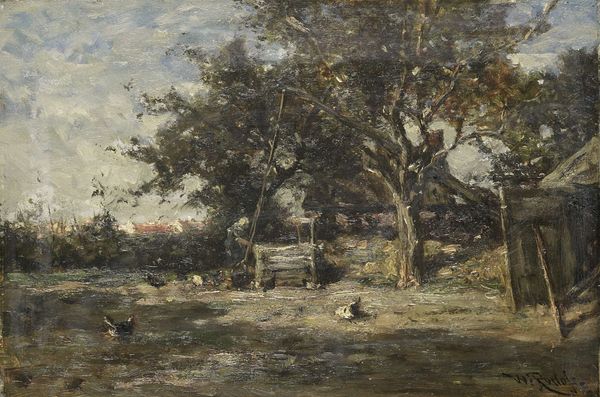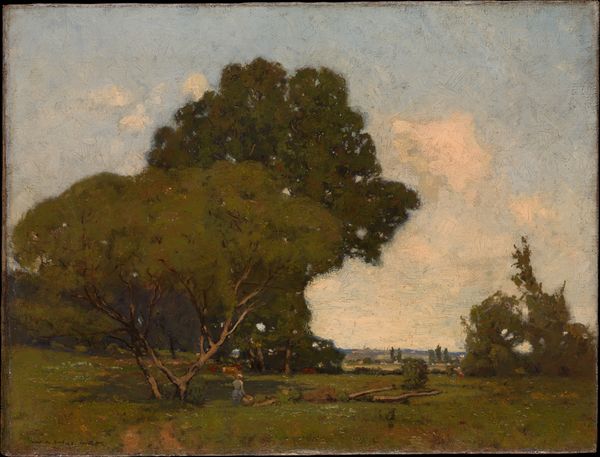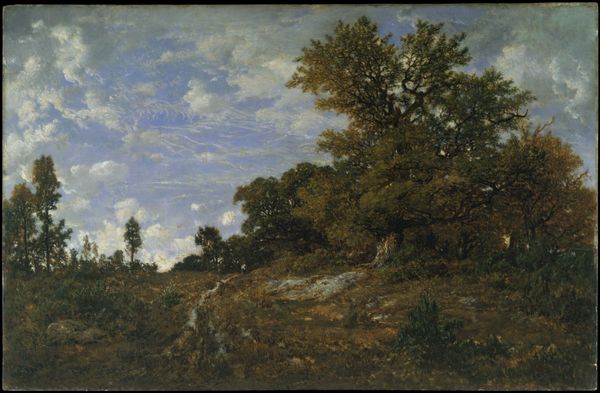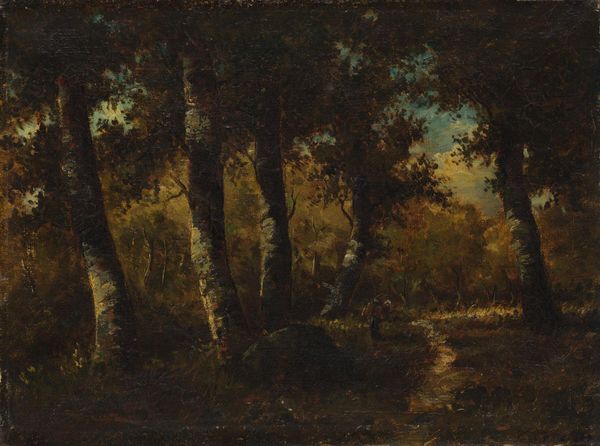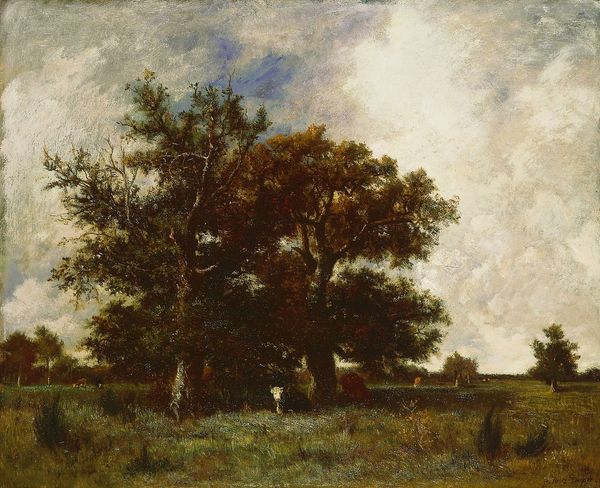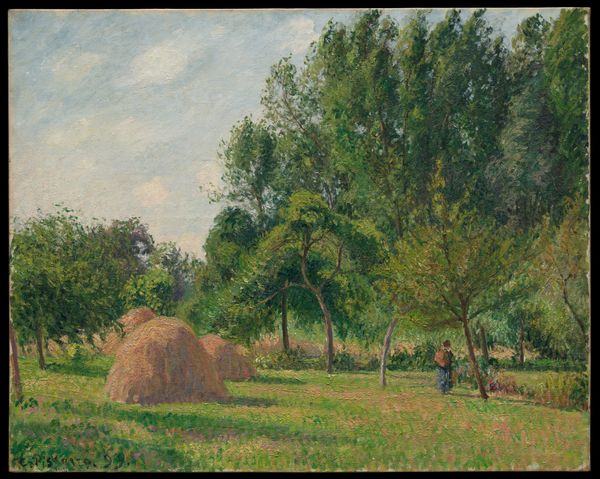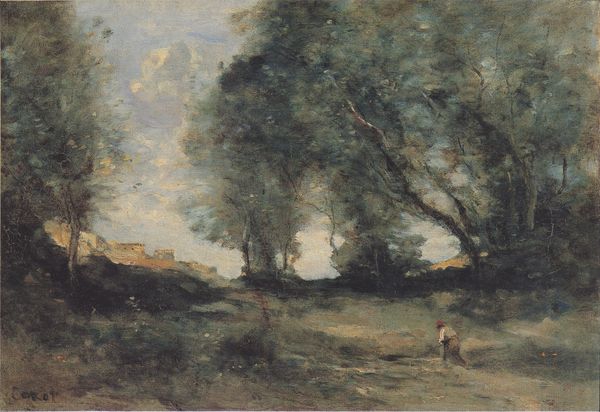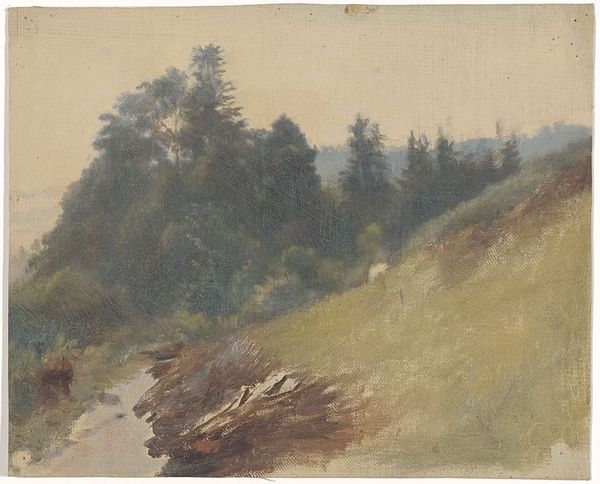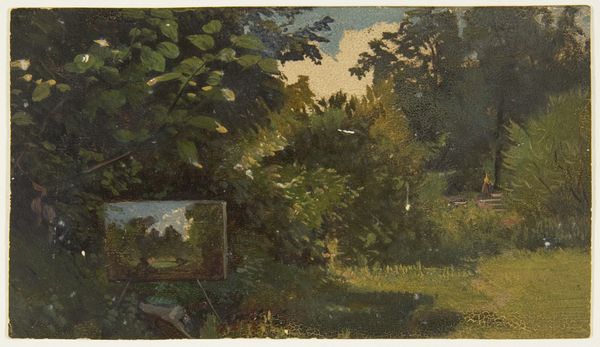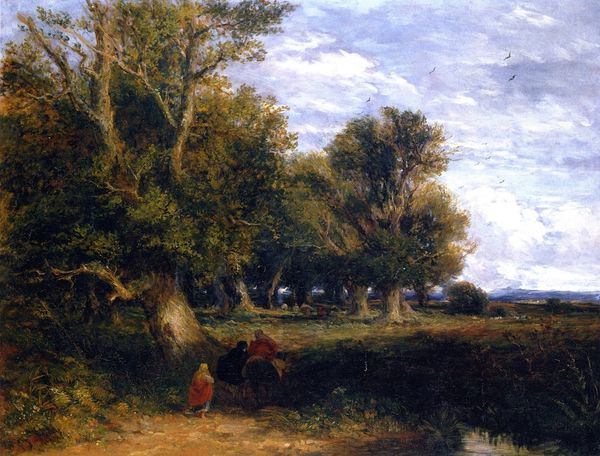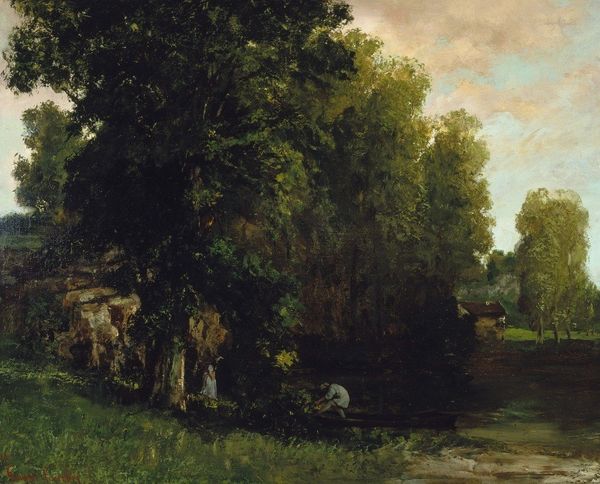
Copyright: Public domain
Theodore Robinson created this painting, "Willows," with oil on canvas, using techniques that were at the heart of the Impressionist movement. The marks are put down in loose but clearly separate touches, carefully observing the subtleties of light. Robinson was working at a time when artists were turning away from academic precision and toward a more immediate experience of the world around them. The Impressionists were particularly attuned to the sensations of modern life. But what did that mean for painting as a form of labor? It is clear that Robinson was trying to capture the essence of a scene quickly, before the light changed, but this aesthetic choice also has implications for how we value the work of the artist. The canvas itself, made from woven fibers, serves as a reminder of the textile industry, and the labor involved in its production. The pigments, too, were becoming more readily available at this time, thanks to advances in chemistry and manufacturing. So, while this painting may appear to be a simple depiction of nature, it is also a product of its time, shaped by broader social and economic forces. It allows us to see the making process, and the materials involved in a new light, challenging traditional views of fine art.
Comments
No comments
Be the first to comment and join the conversation on the ultimate creative platform.
